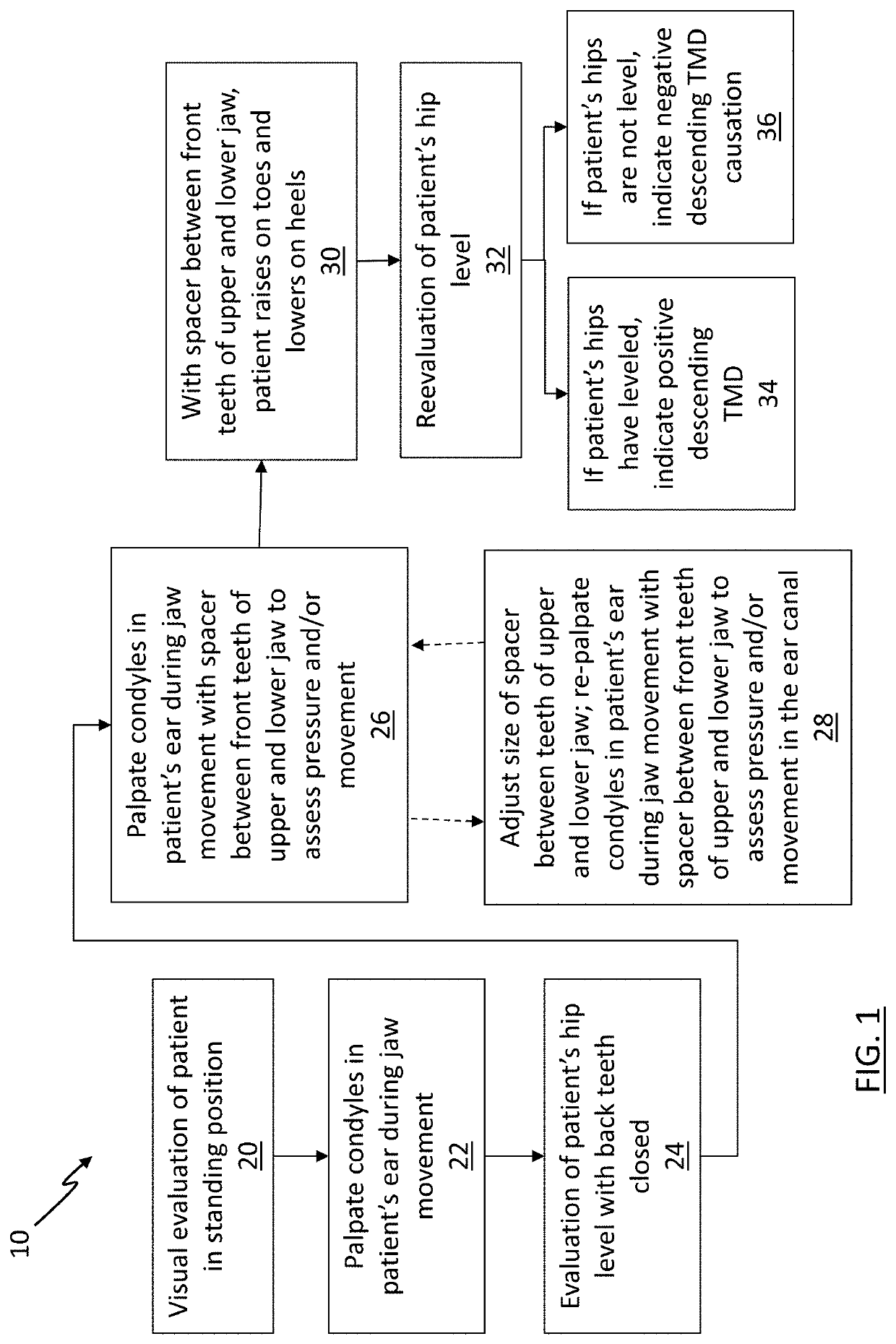Systems, apparatuses, and methods for diagnosis and treatment of temporomandibular disorders (TMD)
a technology for temporomandibular disorders and systems, applied in the field of medical conditions, can solve problems such as conflicting reports with how widespread, no general agreement on etiology, and pain beginning to lose their “sense of self”
- Summary
- Abstract
- Description
- Claims
- Application Information
AI Technical Summary
Benefits of technology
Problems solved by technology
Method used
Image
Examples
Embodiment Construction
[0024]To improve over the conventional methods of diagnosing and treating TMD, this disclosure is directed to a multidisciplinary integrative team approach to diagnosing and treating TMD using techniques from the dental, cranial osteopathic, and bodywork fields. In particular, the combined use of palpation—a highly sensitive haptic skill set—in cranial osteopathy, manual medicine and dentistry have been found to be an effective tool at diagnosing and treating TMD. This new approach, to achieve what may be referred to as the ‘Centralized Ideal (CI) Occlusion’ is a functional jaw joint position that affects the entire body and is based on the osteopathic principle of structure as the mechanical cause of disease. As discussed in greater detail herein, to achieve CI Occlusion, it is possible to use dental orthotics that are adjusted by palpation testing—referred to as the ‘Pinky Test’—to evaluate the patient's hips as the “most sensitive indicator” for a TMD differential diagnosis. This...
PUM
 Login to View More
Login to View More Abstract
Description
Claims
Application Information
 Login to View More
Login to View More - R&D
- Intellectual Property
- Life Sciences
- Materials
- Tech Scout
- Unparalleled Data Quality
- Higher Quality Content
- 60% Fewer Hallucinations
Browse by: Latest US Patents, China's latest patents, Technical Efficacy Thesaurus, Application Domain, Technology Topic, Popular Technical Reports.
© 2025 PatSnap. All rights reserved.Legal|Privacy policy|Modern Slavery Act Transparency Statement|Sitemap|About US| Contact US: help@patsnap.com



